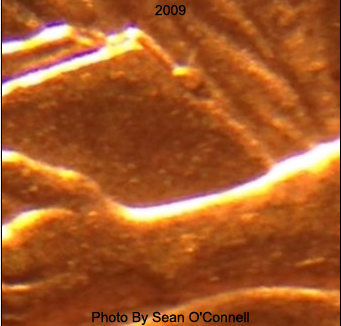
Lincoln Cent CUDs & Other Die Breaks / Chips
Die Cracks
Die cracks are a fairly common occurance on coins. They appear as a raised line on the coin's surface.
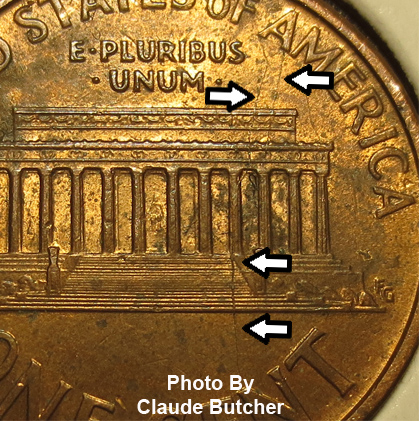
Die cracks from the top of Lincoln's head, going towards the rim, have been nick named "Spiked Heads" by collectors. Cracks on the head are referred to as "Cracked Skull" cents.
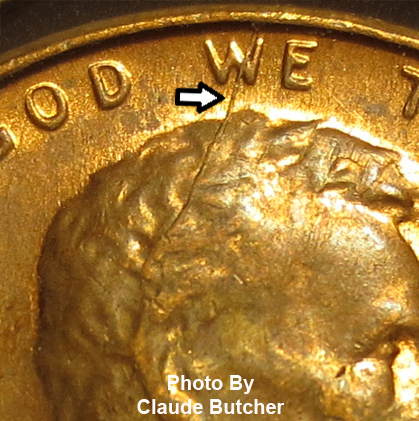
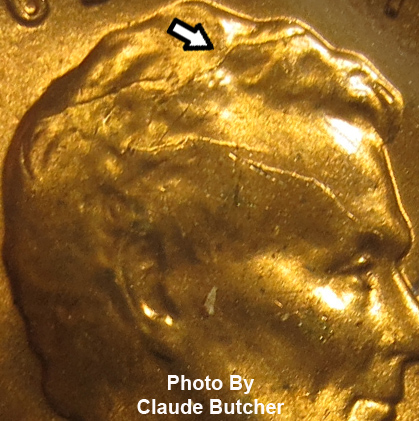
Die cracks can happen anywhere on a die but will usually happen in places where the die is weakest, like the corners of the Lincoln Memorial on the reverse side of Memorial cents, or the head of Lincoln's profile.
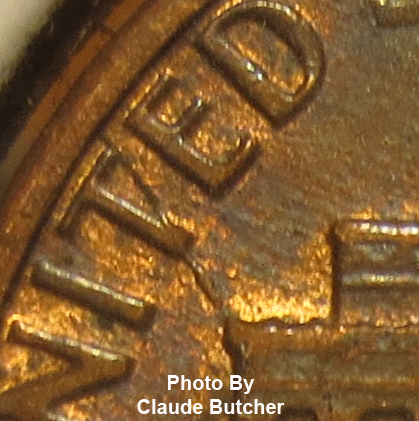
Retained Interior Die Breaks
Retained Interior Die Breaks (RIDB)
Retained interior die breaks are breaks that happen inside the area of die that comes in contact with the coins surface, but not affecting the rim. A crack can run from the RIDB to the rim, but the retained break does not include a part of the rim. Retained die breaks that affect the rim are referred to as retained cuds.
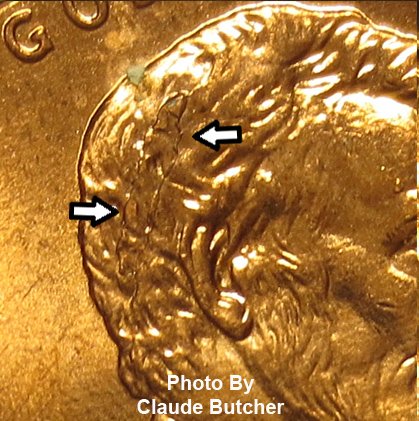
Cuds & Interior Die Breaks
Sometimes we will see a retained cud that has started to chip away, resulting in a retained cud containing a interior die break like the 1983 example below.
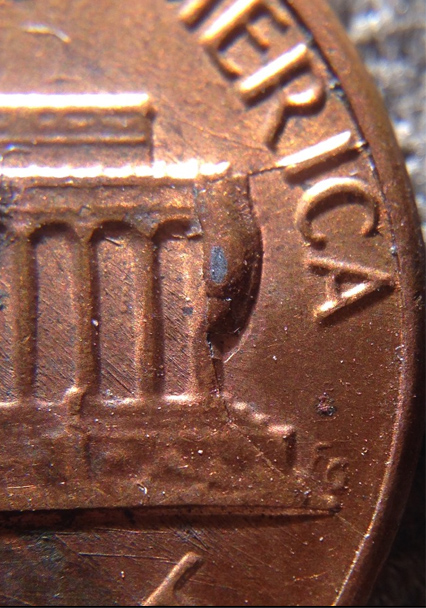
Photo Courtesy of Sean O'Connell
Lincoln Cent Cuds
A cud is a raised area on the rim of a coins surface caused by a die break where a piece of the die is missing. A retained cud is caused from the same type of die break, but instead of falling out, the broken piece of die remains intact, causing a raised line to appear on the coins surface.
Cuds are sought after by error collectors and can be worth $10.00 or more for minor breaks to a couple of hundred dollars for major die breaks.
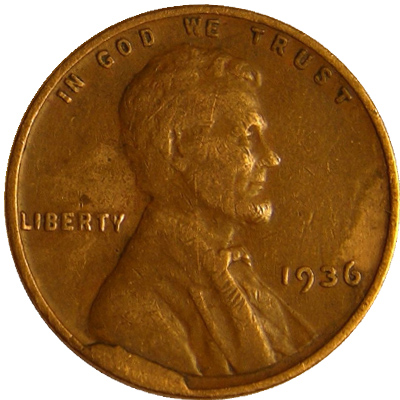
Photo By Ed Lott
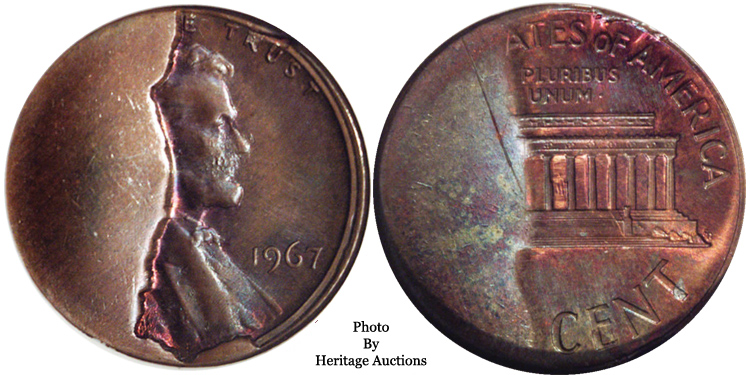
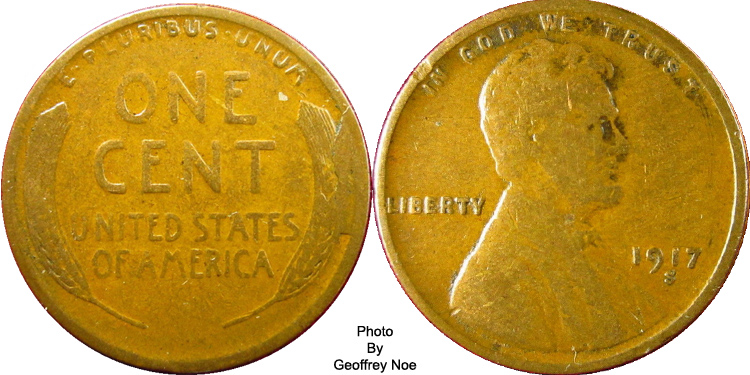
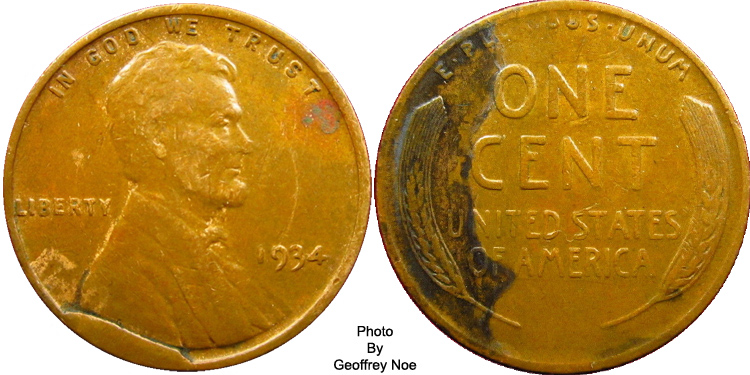
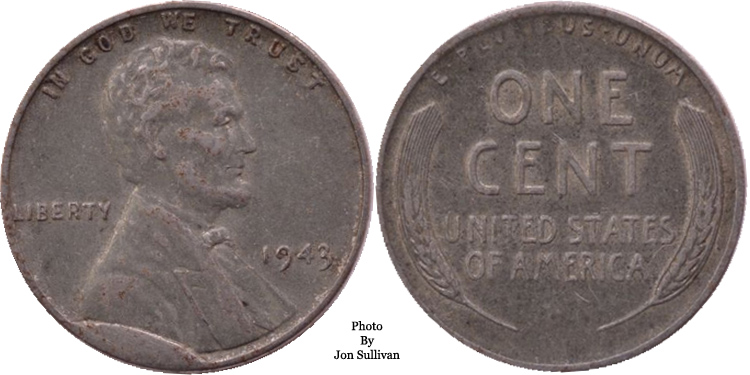
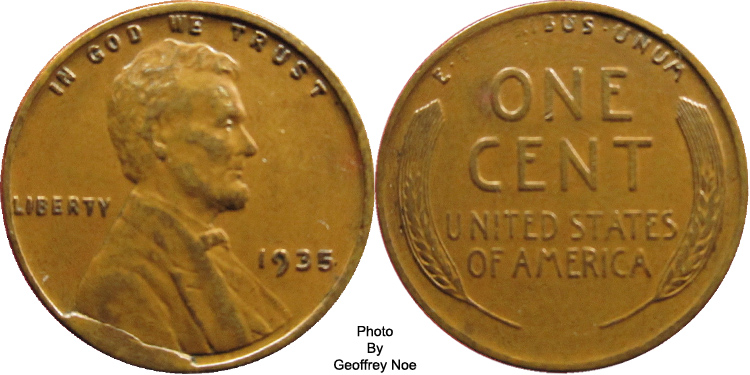
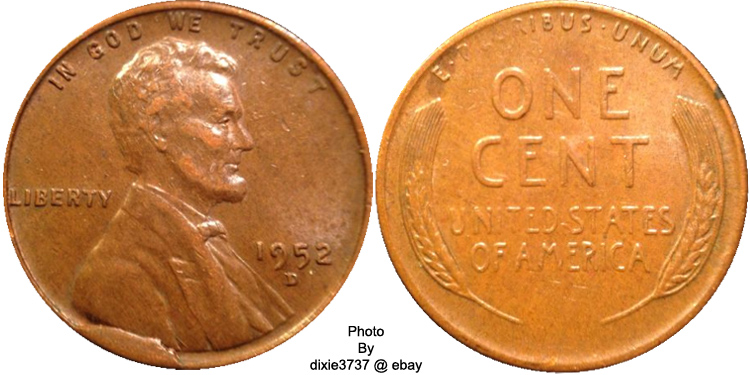
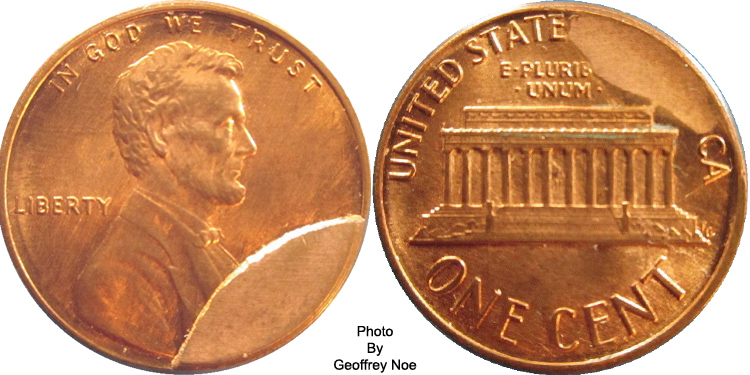
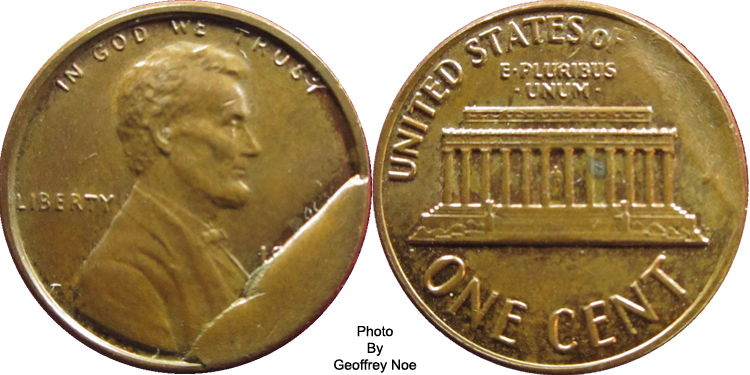

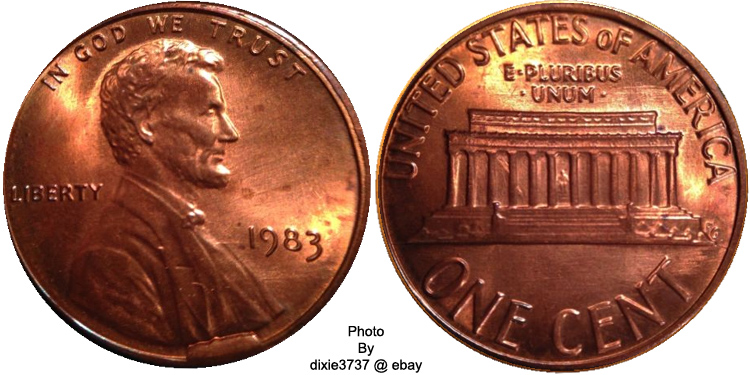
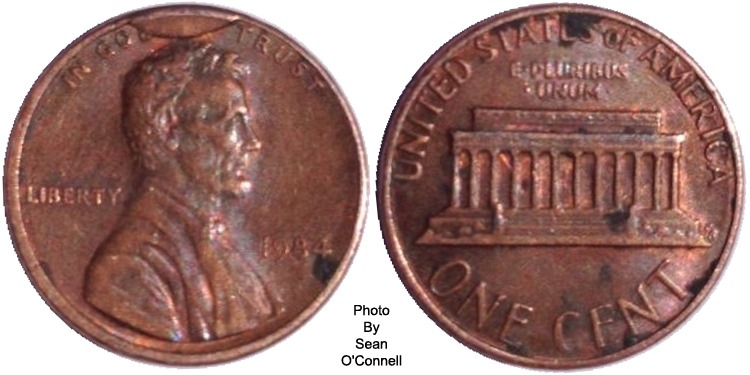
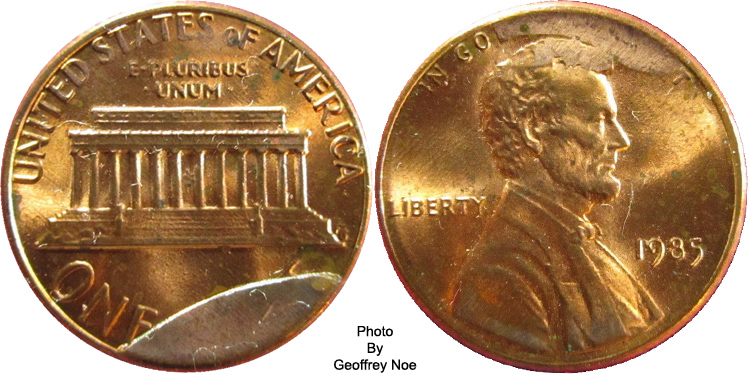
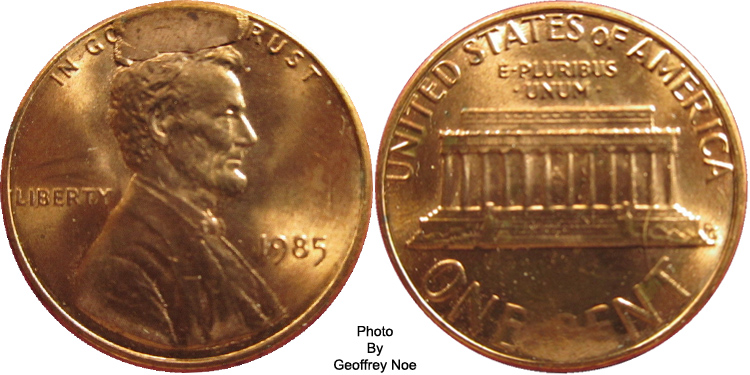

 Rim Cud.jpg)
Retained Cud
A retained cud is a crack along the rim of the coin where the die has broken, but the piece has not yet fallen out. Below are some examples of Retained Cuds.
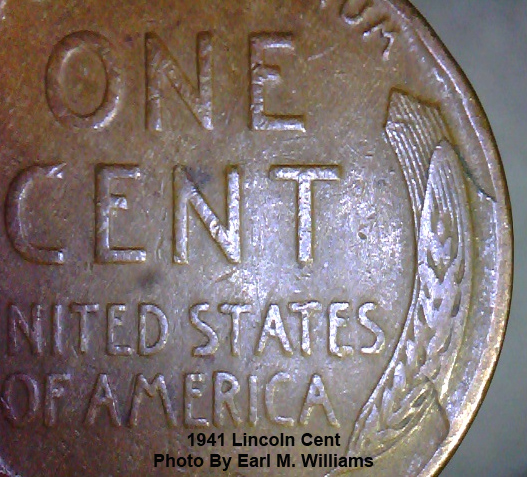
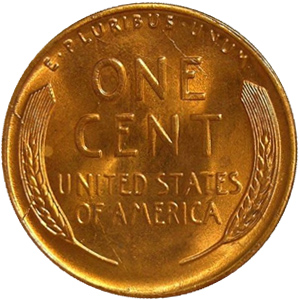
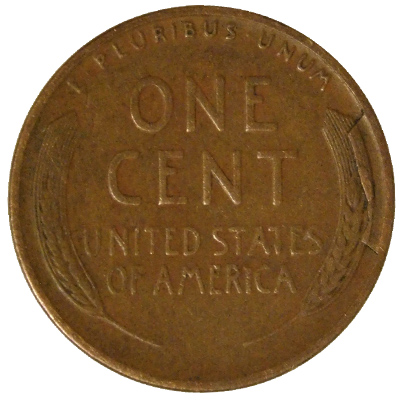
Photos By Ed Lott
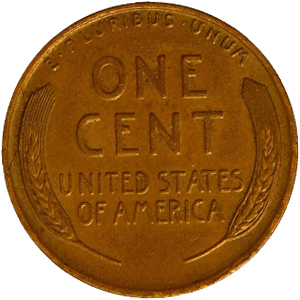
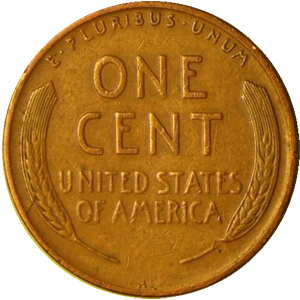
Photos By Ed Lott
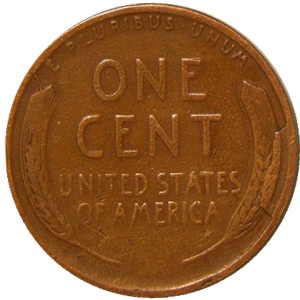

Photos By Ed Lott
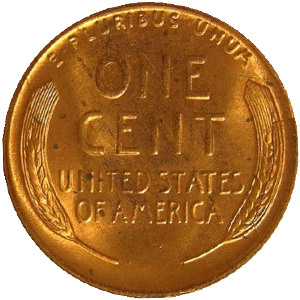
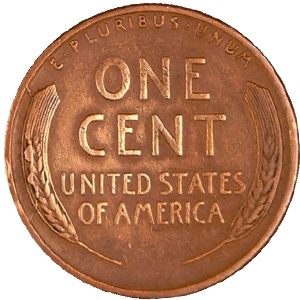
Photos By Ed Lott
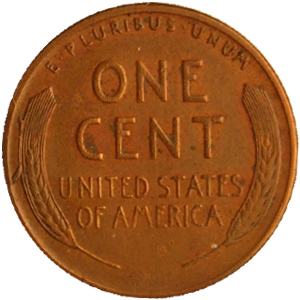
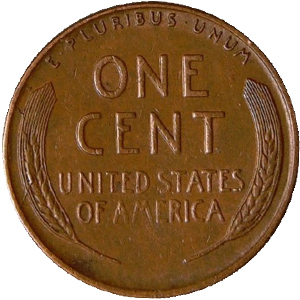
Photos By Ed Lott
BIE Cents
One of the most common places for a die to break is the thin area between the "B" and "E" of LIBERTY. These are known by collectors as "BIE" Cents. There are well over 1000 different types of BIE errors, most occurring in the 1950's.
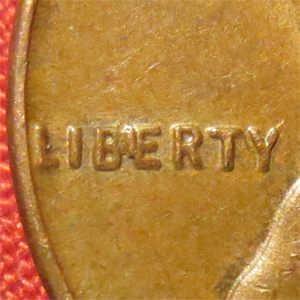

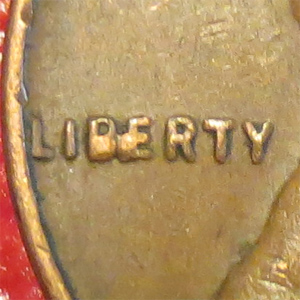
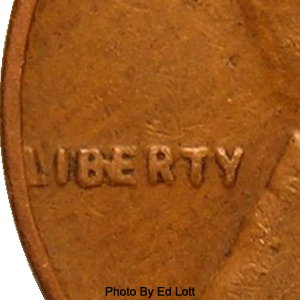
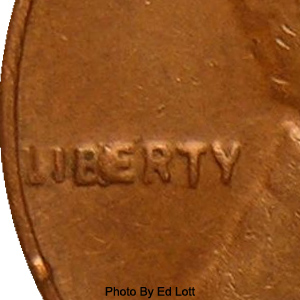
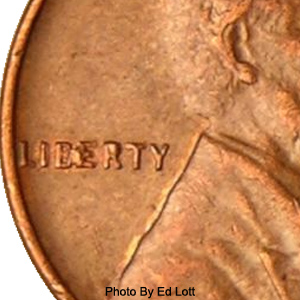
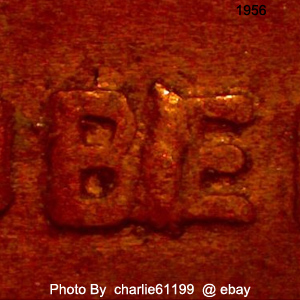
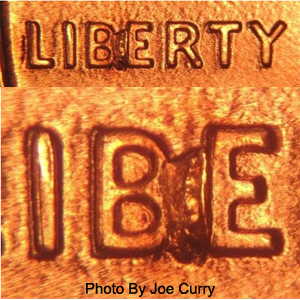
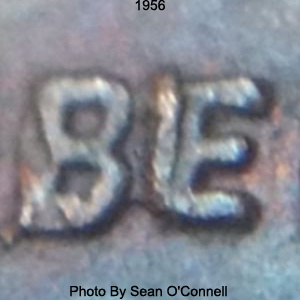
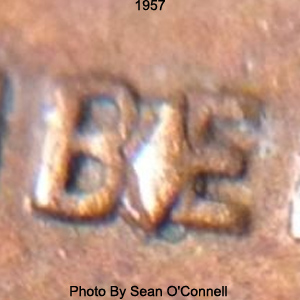
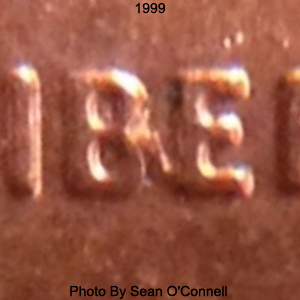
Filled Dates
Another common area to see small die breaks is the inside of the numbers on the date.
The image on a die is recessed, creating a raised image on the coin. Small areas, such as inside the numbers of the date, appear as a raised post on the die. When this post breaks off, it leaves that area on the coin filled with metal. These are referred to as "Filled Date" errors.
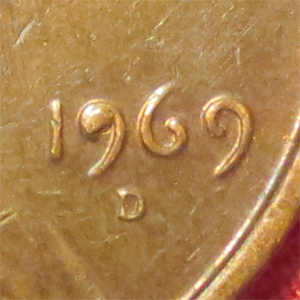

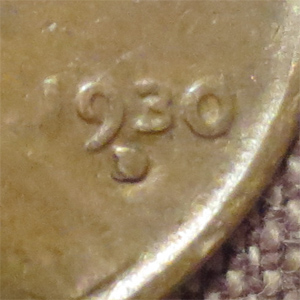

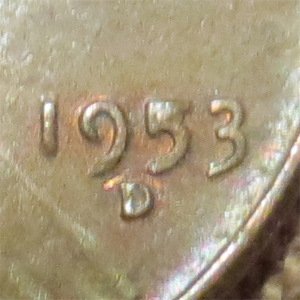
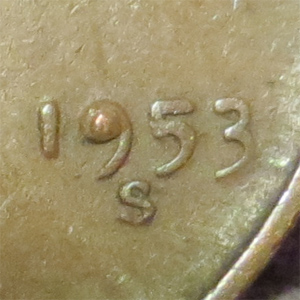
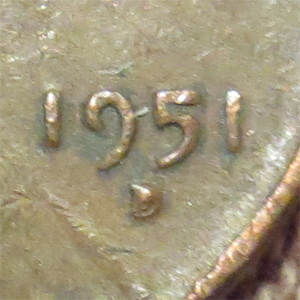
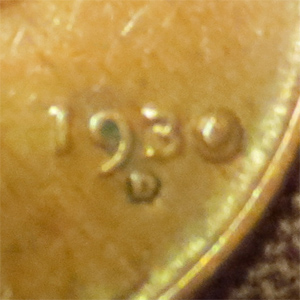
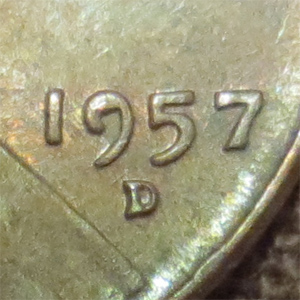
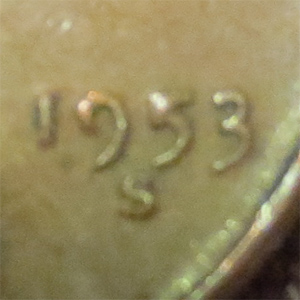
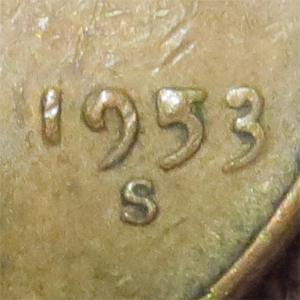
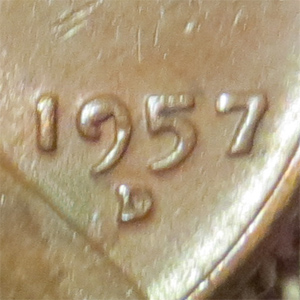
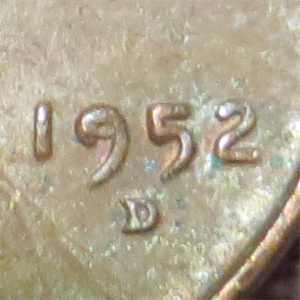

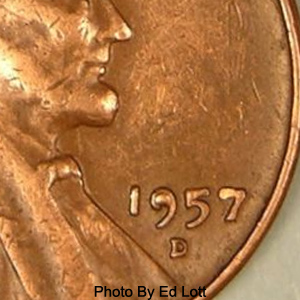
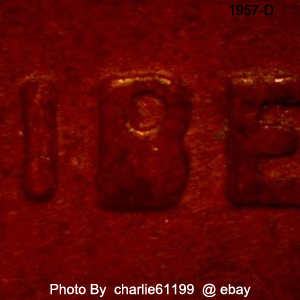
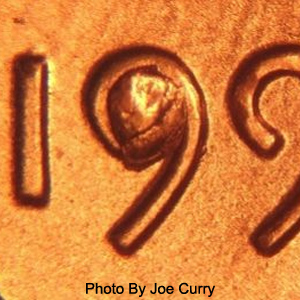
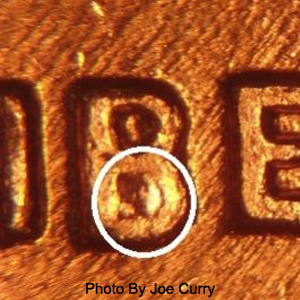
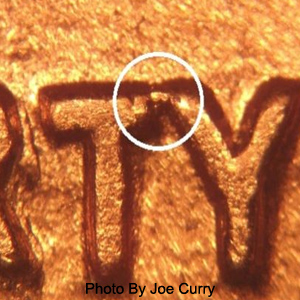
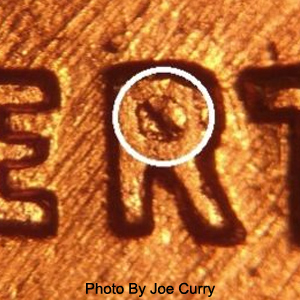
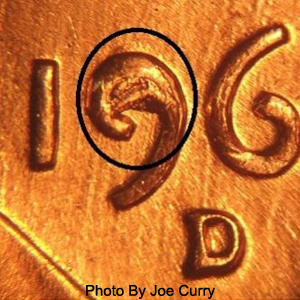
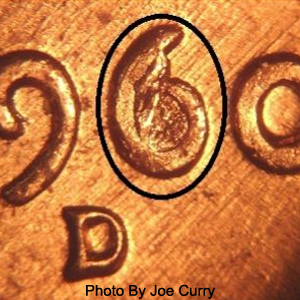
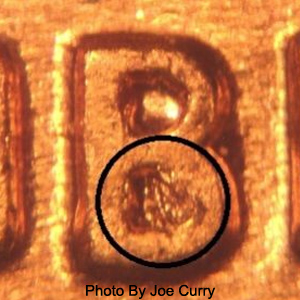
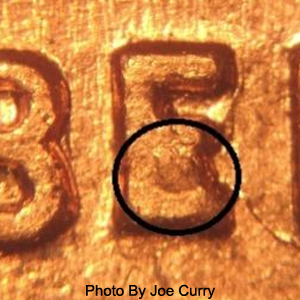
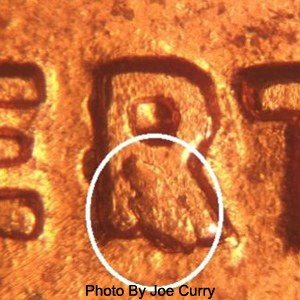
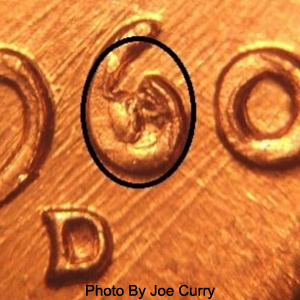
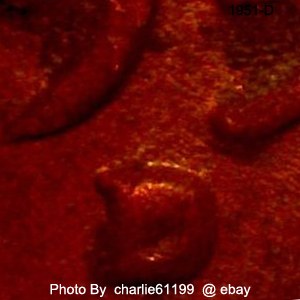
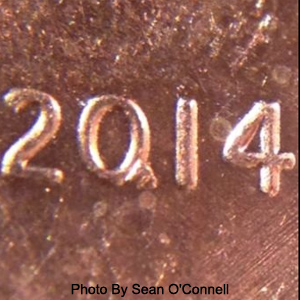
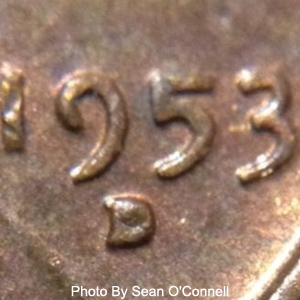
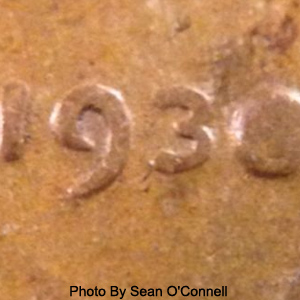

Die Chips
A die chip results in a raised area on the coin's surface. Damage will be a flattened out area or an incuse mark.
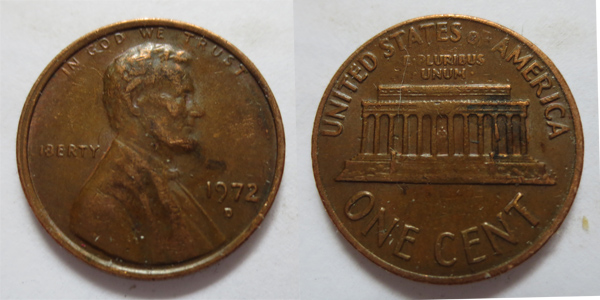
Photo By Lincoln Cents Online
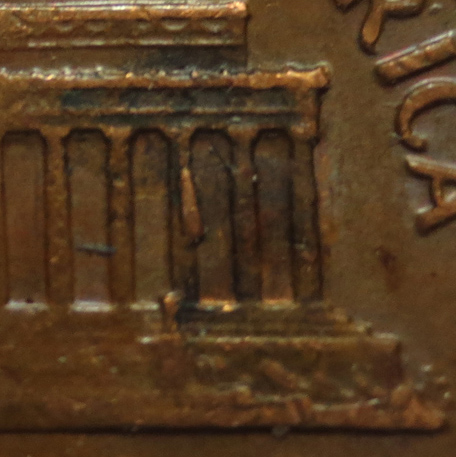
Photo By Lincoln Cents Online
1987
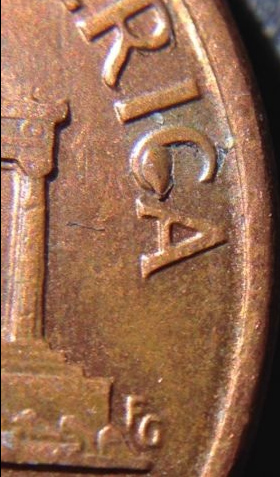
Photo By Sean O'Connell
1987
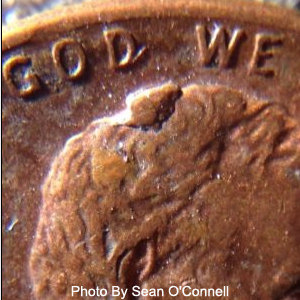
2008
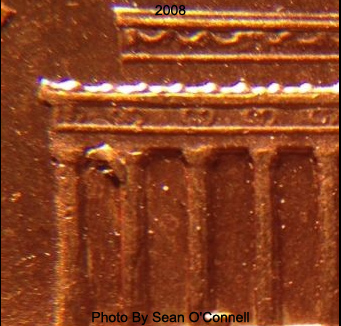
2009
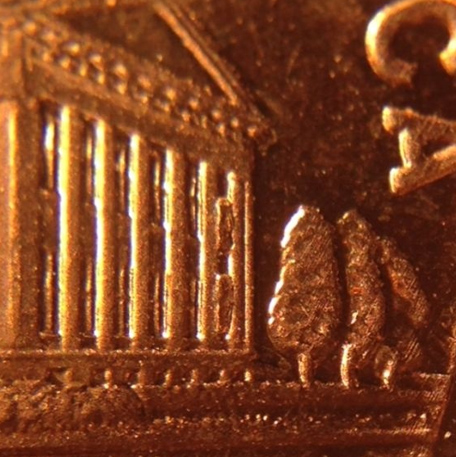
Photo By Sean O'Connell
